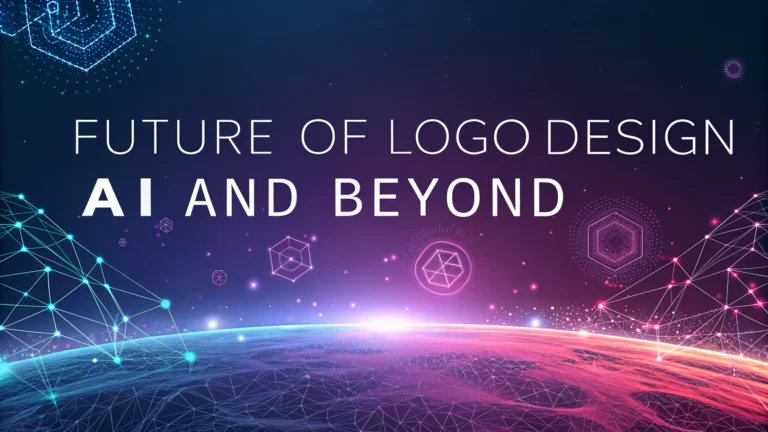Logo design is transforming rapidly with artificial intelligence tools leading the charge into new creative territories.
AI-powered design platforms like Midjourney, DALL-E, and Stable Diffusion now generate unique logo concepts in seconds, changing how designers approach their craft.
Key AI Logo Design Tools
- Looka – Automated logo generation with customization options
- Brandmark – AI-powered logo creator with color scheme suggestions
- Tailor Brands – Business identity platform with AI logo design
- Wix Logo Maker – Interactive AI tool with industry-specific suggestions
Benefits of AI in Logo Design
- Faster concept generation
- Cost-effective solutions for small businesses
- 24/7 availability for quick iterations
- Data-driven design decisions
Human designers are adapting by focusing on strategic brand thinking and complex creative problems that AI can’t solve.
Emerging Technologies Shaping Logo Design
- 3D and animated logos for digital platforms
- Responsive logos that adapt to different screen sizes
- Augmented reality (AR) integration
- Voice-activated brand identities
Practical Tips for Modern Logo Design
- Combine AI tools with human creativity for best results
- Focus on scalability across digital platforms
- Consider motion and animation capabilities
- Test logos in various digital environments
Small businesses can start with AI tools like Looka (looka.com) or Brandmark (brandmark.io) for cost-effective logo solutions.
Future Trends to Watch
- Generative design systems
- Dynamic logos that respond to data
- Integration with blockchain for ownership verification
- Personalized logos based on user behavior
Professional designers can enhance their workflows by incorporating AI tools while maintaining their unique creative perspective and strategic thinking.
| Design Aspect | Current State | Future Prediction |
|---|---|---|
| Creation Time | Hours/Days | Minutes |
| Customization | Manual | Automated/AI-driven |
| Cost | $500-$5000+ | $10-$500 |
Connect with professional logo designers through platforms like Behance (behance.net) or Dribbble (dribbble.com) for custom logo projects.
Impact on Design Industry
- Shift in designer roles from creation to strategy
- Increased demand for AI-human collaboration expertise
- New specializations in AI tool optimization
- Greater focus on brand psychology and user experience
Best Practices for AI-Human Collaboration
- Use AI for initial concept generation
- Refine AI outputs with human expertise
- Maintain brand consistency across iterations
- Document successful AI-human workflows
Challenges to Consider
- Copyright and ownership concerns
- Quality control in AI-generated designs
- Maintaining brand uniqueness
- Balancing automation with creativity
Quality Assurance Steps
- Cross-platform compatibility testing
- Brand guideline compliance checks
- Stakeholder feedback integration
- Technical specification verification
Conclusion
The fusion of AI and human creativity in logo design represents a significant evolution in the field. While AI tools provide efficiency and accessibility, human expertise remains crucial for strategic thinking and emotional connection. Successful designers will embrace AI as a powerful tool while focusing on higher-level creative problems and brand strategy.
For optimal results, organizations should develop workflows that combine AI capabilities with human insight, ensuring both technological advancement and creative authenticity in their logo design process.
FAQs
- How is AI transforming the future of logo design?
AI is revolutionizing logo design through generative design tools, automated customization, and machine learning algorithms that can analyze design trends and create multiple variations instantly while learning from user preferences and market data. - Will AI completely replace human logo designers?
No, AI will serve as a powerful tool rather than a replacement. Human designers will remain essential for understanding brand context, emotional connection, and creative direction while using AI to enhance their workflow and capabilities. - What are the main advantages of AI-powered logo design tools?
AI-powered tools offer rapid prototyping, cost-effectiveness, 24/7 availability, instant variations, and the ability to analyze vast amounts of design data to create trend-aware logos. - How will virtual and augmented reality impact logo design?
VR and AR will require logos to be more adaptable and dynamic, functioning effectively across multiple dimensions and interactive environments while maintaining brand recognition. - What role will animation play in future logo design?
Animated logos will become increasingly important as digital platforms evolve, with kinetic logos that respond to user interaction and adapt to different screen sizes and contexts. - How will sustainable and ethical design influence future logos?
Future logo design will emphasize environmentally conscious elements, including sustainable color choices, minimalist designs that require less digital energy, and shapes that reflect environmental responsibility. - What impact will 5G and faster internet have on logo design?
Higher bandwidth will enable more complex, responsive, and interactive logo designs, including real-time rendering and personalization based on user data and context. - How will machine learning improve brand consistency in logo design?
Machine learning will help maintain brand consistency by automatically adjusting logos for different applications while ensuring they adhere to brand guidelines across all platforms and formats. - What role will generative design play in the future of logos?
Generative design will allow for the creation of multiple logo variations based on set parameters, enabling designers to explore countless possibilities while maintaining brand guidelines. - How will user data and analytics influence logo design?
Data analytics will inform logo design decisions by providing insights into user engagement, emotional responses, and effectiveness across different demographics and platforms.







